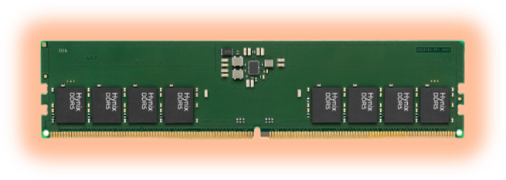Navigating Cost and Longevity in Long-Life Applications in 2024 and Beyond

In January of this year, reports predicted that the semiconductor industry was bracing itself for significant price increases in memory components, with DRAM prices expected to rise by up to 88% and NAND flash memory expected to surge by up to 50%. DDR5 taking centre stage and AI booming were forecast to be the main drivers of this price hike. As we’re entering the last couple of months of 2024, we take a step back on what has been happening in the market and the impact it has on memory components for long-life applications.
Long-life, high-reliability applications—such as automotive, aerospace, industrial automation, and telecommunications—where product longevity and reliability are paramount, require memory components that can withstand years of consistent performance in harsh environments. As memory prices fluctuate, companies in these industries need to reassess their strategies for procurement, utilization, and optimization to ensure cost-effective solutions without compromising product durability and reliability.
Making room for the new
The semiconductor industry experienced a rebound in early 2024, following a challenging 2023 marked by supply chain disruptions and slowing demand. With the industry recovering, there was a resurgence in demand across sectors, but production capacities hadn’t fully caught up yet, which caused supply constraints. This was further exacerbated by the increasing costs of raw materials and transportation. Geopolitical tensions also continued to affect the supply of semiconductors, especially advanced memory types like DDR5 and High Bandwidth Memory (HBM). As production ramped up for these newer memory types, the cost of manufacturing rose due to the complexity of producing cutting-edge components at higher densities and speeds, while the production capacity of previous-generation memory ICs declined.
As of late 2024, the memory market has seen notable price fluctuations, largely influenced by strategic shifts in supply and demand across various applications. Throughout the year, major players in semiconductor manufacturing initiated significant production cuts to counter oversupply and stabilize prices in response to low consumer demand, particularly for NAND and DRAM products. This led to some price recovery in Q1 and Q2, although it also created short-term shortages for high-demand sectors like AI and data processing applications.
Impact on Long-Life Applications
For long-life applications, memory components must offer not just high performance but also extreme reliability and extended lifespans. Price hikes could have a significant impact on systems with a long lifecycle, where the cost of failure can be high, and replacement cycles are infrequent. Memory components that go into automotive, robotics, medical, and telecom applications must be meticulously tested for longevity and performance, adding to the procurement cost.
Long-life applications where reliability and longevity are crucial, have been less directly impacted by the volatile pricing of consumer-grade memory but are affected by the overall market strategy. Suppliers have aimed to maintain price stability for these applications, as demand here is less sensitive to consumer market fluctuations but is still impacted by broader inventory and supply constraints. Looking into 2025, industry experts anticipate that the market for these durable applications will benefit from increased supply as production returns to regular levels, though prices might still be under upward pressure due to continued demand.
Mitigating Costs: Strategies for Long-Life Applications
1. Extended Qualification and Reliability Testing
In long-life applications, the quality of memory components is crucial. While cutting-edge memory like DDR5 and HBM offers enhanced performance, the focus in these sectors is not just speed, but reliability. To mitigate costs, manufacturers often opt for extended qualification processes, ensuring that memory components are rigorously tested for endurance and durability before deployment. This extra testing can delay the need for frequent replacements, ultimately controlling long-term costs, as long as the supply of the tested component is guaranteed.
2. Focus on Endurance Over Raw Performance
High-speed memory is essential in some sectors, but many long-life applications benefit more from memory components that prioritize endurance over performance. For example, NAND flash technologies like SLC (Single-Level Cell) and MLC (Multi-Level Cell) offer superior durability and reliability over the higher-density, faster TLC (Triple-Level Cell), making them more suited to applications where consistent long-term use is the priority. Though initial costs may be higher, these components can provide better value by reducing the frequency of replacements.
3. Hybrid Memory Architectures for Balanced Costs
A hybrid approach to memory can help companies manage rising costs without sacrificing the reliability of their long-life products. By combining different types of memory—such as using DRAM for high-speed tasks and slower but more durable NAND flash for long-term storage—manufacturers can strike a balance between performance and cost-effectiveness. This strategy can extend the life of memory components while keeping costs in check, especially as the prices of certain memory types rise disproportionately.
4. Long-Term Relationship with Your Supplier
Building long-term relationships with suppliers specialized in memory components for long-life applications can ensure consistent access to the precise components required. In sectors where reliability is crucial sourcing older-generation memory components from trusted partners helps ensure compatibility and continuity across extended product lifecycles. Long-term collaboration with such suppliers can minimize the risks of shortages or obsolescence and help you plan more effectively, even in a volatile market.
Managing Cost Pressures in 2024 and Beyond
As memory component suppliers adapt to fluctuating demand, buyers focused on stable, long-term memory applications may benefit from keeping a close eye on evolving supply chain conditions and making strategic purchases ahead of potential price shifts. With the right strategies—focusing on endurance, optimizing memory use, and working closely with suppliers—procurement specialists can navigate supply chain challenges without compromising the quality or reliability of their products. As the semiconductor industry continues to evolve, the demand for more advanced memory components will only grow, but so will the need for efficient, cost-conscious solutions. By staying ahead of these trends and making informed decisions, companies can ensure that their long-life applications remain viable and competitive, even in the face of rising costs.
SMARTsemi is your supply chain partner for DRAM components, eMMC solutions, and SD/microSD Flash Memory Cards for long-life applications. With 20+ years of industry experience, we understand your challenges and have aligned our priorities with yours to simplify your memory chip supply chain for the long run. We know what you need before you need it. Get a jump start and request a sample today.







